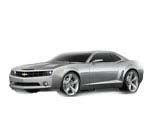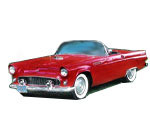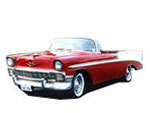The Flying Cars Promise broken
|
Dude? Where’s My Flying Car? We’ve all gone to the Auto Shows to look at the new models coming out in the coming year and they usually look impressive enough, but what we really go to see are the automakers visions of the future. The Concept Cars. As much as we can drool over a Lamborghini or pant at a Lotus, it’s the designs of next generation vehicles that truly get our blood pressure rising and eyeball spinning in the back of our heads. We love to look at space like shapes of things to come especially if it’s something we can sit in and drive off. If it’s something we can fly, then even better.
Real cars of the future are not vehicles that will roll on four wheels and look like sleek streaks of lightning or oblong tear drops that hum instead of roar. No, the true prospect of visionary transport is not bound by the winding roads but by the rush of the winds in the sky.
Behold the dream of travel that has been dogging humans and festering in their nightmares since people realized we could indeed see life in the 21st century – Flying cars. Ever since the new millennium burst upon us without imploding our hard drives or exploding our CPU’s, mankind has been asking – “Where’s my flying car?” Wasn’t this the ever present solitary symbol of our accent into the era of space age travel, that we’d all get our own private vehicles that we could roll out of the garage, glide down the drive way and take off into the wild blue yonder? I see the wild blue but how am I going to get to the “yonder”? Apparently the age of cars that have a vertical lift still has a little ways to go, but not too far. In fact there are a number of intrepid invertors and companies that have prototypes right now that can take us into the Jetson stream. The Moller company’s latest design is it‘s Skycar M400. This two seat personal flying craft has vertical lift and landing and can cruise at a maximum speed of 375 mph at a height of 13,200 feet. That’s the perfect speed and height for the modern skyway. George would be proud. Although George Jetson could never afford the $1 million dollar price tag, considering what Mr. Spacely pays him, with a little luck the manufacture hopes to bring it down to the more earthly bargain of just $60,000 once it goes into mass production. The Transition will have a fuel capacity of 20 gallons with a cruising speed of 120 miles per hour which uses about 75% power. Gas mileage is better than most mid-sized cars with 30 mpgs in the air and 40 mile per gallon on the highway. When fully folded out the wing span stretches to 27 feet and the total length of the aircar is just 225 inches. Most flying concept cars tend to look more like small planes or a hybrid of plane and helicopter, most except for the LaBiche Aerospace FSC-1TM. Truly a treat for sky jockey desiring to soar into the Stratosphere at hair-raising speeds while sitting in a beautiful sleek folding design. The LaBiche has wings and rear propeller that will automatically hide inside the car when you’re on the street but when you’re ready to take off she’ll spread out and blow away the birds at a top speed of 275 mph. Not one for the mass produced crowd because the LaBiche is a build it yourself kit that costs $175,000. Air plane glue not included. Urban Aeronautics introduces us to a revolutionary type of personal transport in the X Hawk. Developed for real world urban applications, the X Hawk has vertical lift and landing abilities and uses a vane control system which is comprised of cascading vanes at the inlet duct which gives this air ambulance looking vehicle unique maneuverability options. This amazing system of control allows the craft to move up, down, forward, back and sideways. This type of mobility is unheard of and is a much more complete articulation of movement from the standards of roll, pitch and yaw. Control of this kind gives the X Hawk tremendous stability, whether flying in gusty winds or having your passengers jump out, hopefully with parachutes. The rotor-less design of vane control systems does away with complicated and expensive rotor head which drops the craft’s purchase and maintenance costs. Imagine a world where you can take off into the sky, fly to the office and land on the roof or the street. With advancements in aerospace technologies rapidly coming into reality, the day of our flying cars could literally been seen within our lifetimes. Now I want my personal jet pack.
|
|||||||||||||||||||||||||||||||||||||||||||||||||||||||||||||||||||||||||












 Classic ThunderBird
Classic ThunderBird








